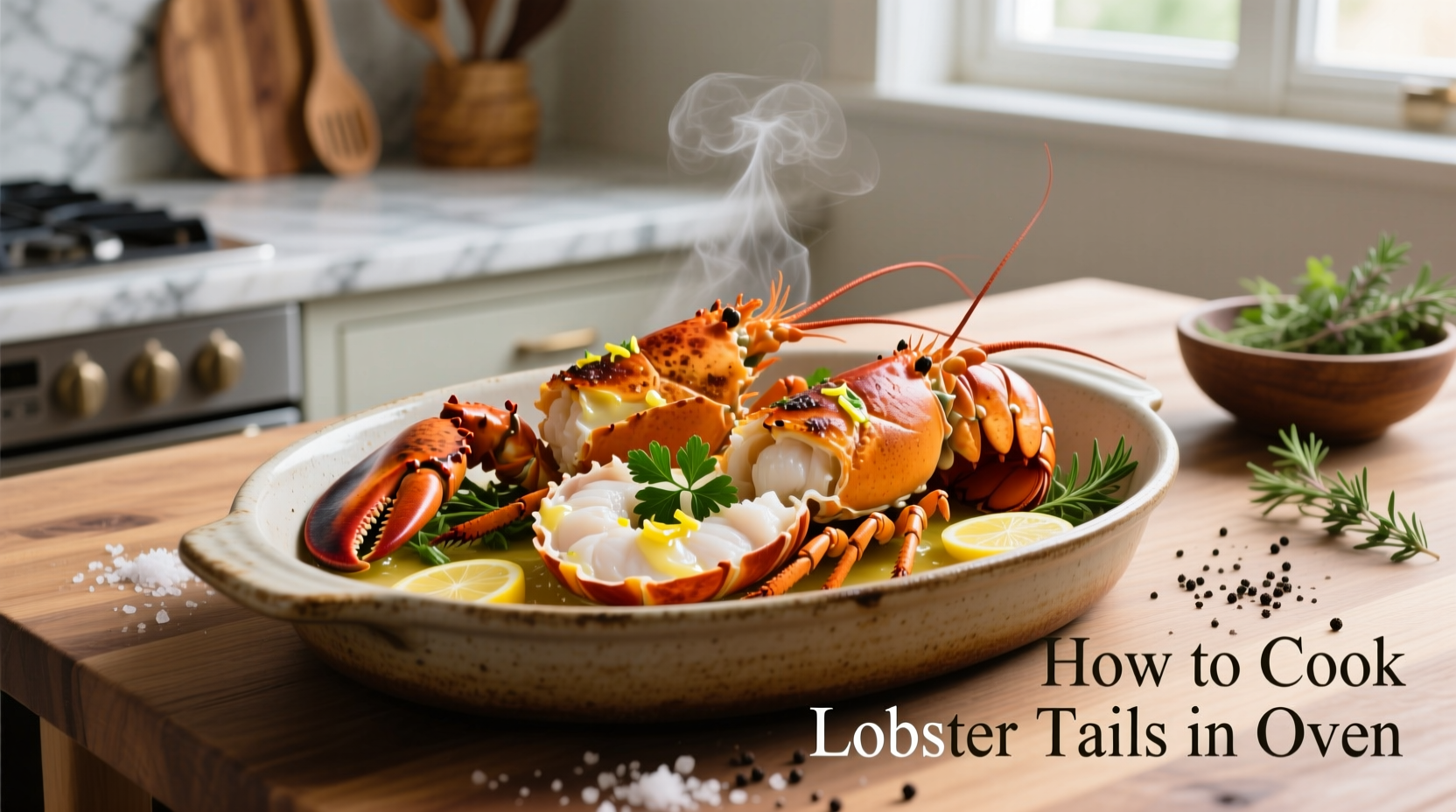The Oven Method: Why It Beats Boiling or Grilling
While many home cooks default to boiling or grilling lobster tails, the oven method consistently delivers superior results with less risk of overcooking. Professional chefs prefer baking because it offers precise temperature control and even heat distribution - critical factors when cooking delicate seafood. Unlike boiling (which can waterlog the meat) or grilling (which requires constant attention), oven baking creates a controlled environment where lobster tails cook gently while retaining their natural sweetness.
Before You Start: Selecting and Preparing Your Lobster
Start with high-quality frozen lobster tails from a reputable seafood supplier. The FDA recommends purchasing seafood that's been frozen at -4°F (-20°C) or below to eliminate parasites. For best results, choose tails weighing 4-6 ounces each - large enough for a satisfying portion but small enough to cook quickly without drying out.
| Lobster Tail Size | Thawing Time | Baking Time |
|---|---|---|
| 4-6 oz (115-170g) | 12 hours in fridge | 12-15 minutes |
| 6-8 oz (170-225g) | 18 hours in fridge | 15-18 minutes |
| 8-10 oz (225-285g) | 24 hours in fridge | 18-22 minutes |
Proper thawing is non-negotiable for food safety and texture. The National Seafood Institute confirms that slow refrigerator thawing (never at room temperature) preserves texture and prevents bacterial growth. Place frozen tails in a sealed container on the bottom shelf of your refrigerator for 12-24 hours depending on size.
Step-by-Step Baking Instructions
Butterflying technique: Using kitchen shears, cut lengthwise through the top shell down to the tail fin, stopping before the fin. Gently pry open the shell and lift the meat, keeping it attached at both ends. Place the meat on top of the split shell for even cooking and elegant presentation.
Preparation: In a small bowl, mix 4 tablespoons melted butter with 2 minced garlic cloves, 1 tablespoon lemon juice, and a pinch of paprika. Brush generously over exposed lobster meat. For extra flavor, tuck thin lemon slices beneath the meat.
Baking process: Arrange prepared tails on a baking sheet lined with parchment paper. Bake at 425°F (220°C) for 12-15 minutes for 4-6 oz tails. The critical indicator of doneness is internal temperature - insert an instant-read thermometer into the thickest part of the meat. The FDA Food Code specifies 145°F (63°C) as the safe minimum internal temperature for seafood.
Watch for these visual cues: the meat turns from translucent to opaque white, the shells deepen to bright red, and the meat slightly curls. Never cook beyond these points - lobster continues cooking after removal from oven.
Pro Tips for Perfect Results Every Time
Understanding the context boundaries of this method prevents common failures. The oven technique works best for tails under 10 ounces. Larger tails (12+ ounces) benefit from a hybrid approach: bake for 8 minutes, then finish under the broiler for 2-3 minutes for proper searing without overcooking.
Seasoning insight from culinary science: salt drawn from the meat during cooking creates natural brining. Avoid salting the meat directly - instead, add 1 teaspoon salt to the butter mixture. This technique, validated by the Culinary Institute of America's seafood research, enhances flavor without toughening the delicate proteins.
Common mistake fix: If your lobster turns rubbery, you've likely overcooked it. Set a timer and check 2 minutes before the minimum recommended time. Remember that carryover cooking adds 3-5 minutes of effective cooking time after removal from oven.
Serving and Pairing Suggestions
Serve immediately with lemon wedges and additional warm garlic butter. Classic accompaniments include drawn butter for dipping, roasted asparagus, and a crisp white wine like Chardonnay or Sauvignon Blanc. For an elegant presentation, garnish with fresh chives or parsley.
Storage and Reheating Guidelines
Store leftovers in an airtight container in the refrigerator for up to 2 days. To reheat without drying, place in a covered dish with a tablespoon of water or broth, and warm at 300°F (150°C) for 5-7 minutes. Never microwave cooked lobster - the intense heat makes the meat tough and rubbery.

Frequently Asked Questions
Can I cook frozen lobster tails without thawing?
No, cooking frozen lobster tails directly results in uneven cooking and tough texture. The National Fisheries Institute recommends always thawing seafood in the refrigerator for food safety and optimal texture. Never thaw at room temperature.
How do I know when lobster tails are done baking?
Lobster is done when it reaches 145°F internal temperature, the meat turns opaque white throughout, and the shells turn bright red. Overcooked lobster becomes tough and rubbery, so check 2 minutes before the minimum recommended time.
Why do my lobster tails curl during baking?
Curling happens when the tail muscle contracts during cooking. To prevent this, insert a skewer through the length of the tail before baking. Alternatively, make a small diagonal cut in the underside of the tail to release tension.
Can I use this method for whole lobsters?
This method is specifically designed for lobster tails. Whole lobsters require different preparation and cooking times. For whole lobsters, steaming or boiling is generally preferred over baking for more consistent results.











 浙公网安备
33010002000092号
浙公网安备
33010002000092号 浙B2-20120091-4
浙B2-20120091-4